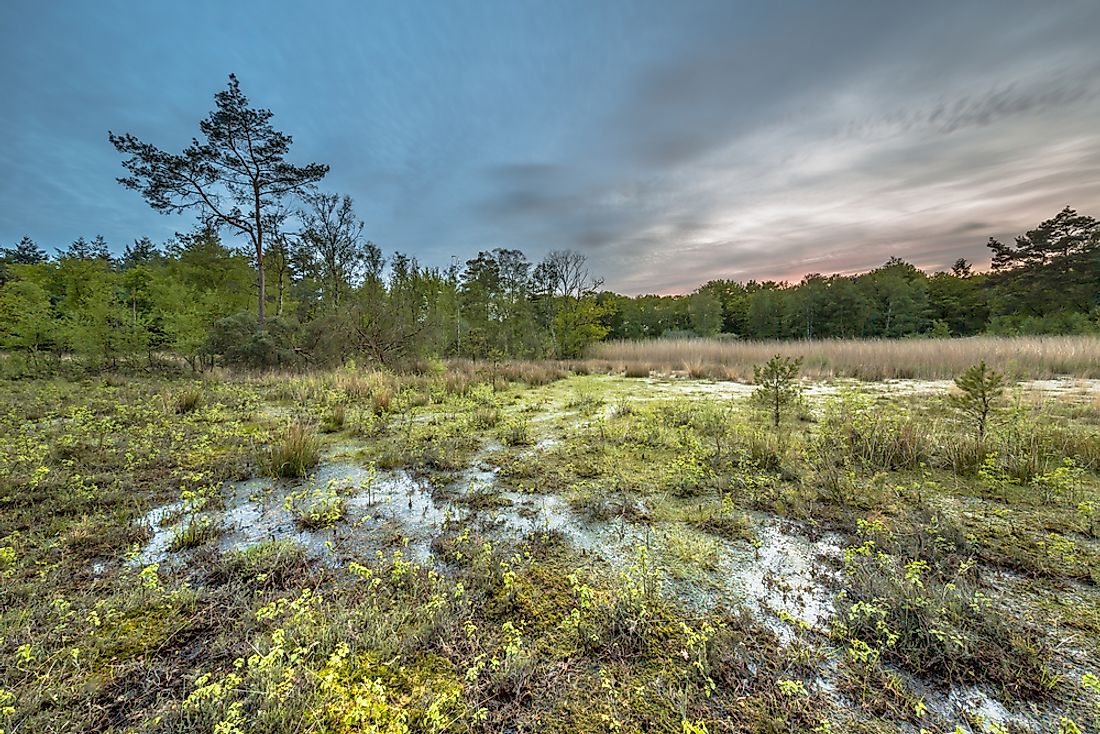What Is A Fen?

Fens are wetlands with moderate or low fertility and they are fed by surface runoff and groundwater. Fens are mostly found on gentle slopes. The principal feature of a fen is the high water table and the low or moderate rainfall. The flow of water across the fen is also very slow. The fluctuation of the water table is very limited and remains at a near constant. Since the fen is on a sloping ground, it is more fertile than a bog, although they share some characteristics. Fens slope into fertile swamps where peat builds up due to the accumulation of dead plants.
Types Of Fens
There are four types of fens. The sloping fen is the most common, and it is formed when rain water collects at the base of a hill. The basin fen began as a pond or a lake before it fills with decaying plants. The spring mounds is formed when groundwater is discharged as at a localized point. A lava discontinuity is formed when a recent layer of lava overlie and older lava and melts the rocks preventing groundwater from flowing. The water collects underground for sometimes before emerging to the surface.
Hydrology
Water flows in the fen throughout the year because the water table is high and fluctuates slowly. It is crucial that the water level remains stable and should not be drained physically. The land close to the fen should also not be drained to prevent it from drying up and being overrun by weeds. Peat formation occurs in the fen because of the low levels of oxygen that cause the dead plants to decay slowly. When the fen is drained oxygen results in oxidation of the peat causing it to sink and thus lowering the surface elevation. When this occurs, it is very difficult to undo because it takes hundreds of years for dead plants to accumulate and restore the peat. The most effective way of maintaining the peat soil in wetlands and farmland is ensuring that they stay damp across the year.
Importance
Fens are some of the most important wetlands. They contain a variety of animal and plants. Fens support animal and plant species that thrive in fertile swamps and less fertile bogs. They are home to the black mad fish which is considered a rare species. Fens are also home to a variety of other animals such as the green gecko, bittern, and fernbirds. They also prevent sediments from flowing into rivers and streams thus preventing the rivers from overflowing. Plants that grow in these wetlands include baumea, ferns, flax, and schoenus.











